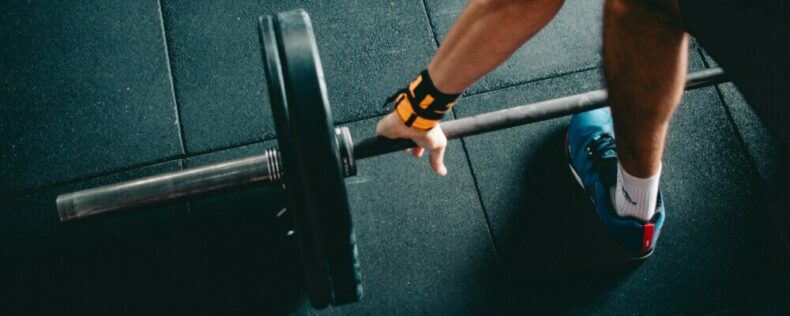Have you ever seen people walk into your gym with full duffel bags while the only thing you ever seem to need is a water bottle? What’s in those bags, and is it all really necessary? In reality, there are many workout accessories that people bring to the gym because it helps enhance their training. If you’re interested in learning about some of these items that can improve your workout routine, here are some of the best workout accessories that you may want to start bringing to the gym as well.
Barbell Pad
Squats and hip thrusts are vital components of many people’s leg day routines, as they’re great exercises for building lower body strength. However, many people find that doing these exercises by placing the barbell directly on their bodies can be a rather uncomfortable and even painful experience.
Because of this, a barbell pad is a great workout accessory to have. It serves as a cushion between the bar and the body so there isn’t any discomfort when performing these movements. If you’re someone who’s been avoiding incorporating these kinds of exercises into your routine for this very reason, a barbell pad can be a worthwhile investment to take the pain out of making gains.
Dip Belt
Pull-ups and dips are terrific exercises that can serve as the foundation for a bodyweight-based exercise routine or as a supplement to a weightlifting routine. While it’s totally fine to keep doing them with just your body weight and increase the difficulty by increasing the number of reps you do, another way to continue progressing with these exercises is by loading on additional weight so that you’re pulling more than just the weight of your body.
This is where a dip belt can really come in handy. Instead of trying to clumsily clutch weights between your legs and risk dropping them at any point, a dip belt allows you to securely hang weights from your body, and makes for an incredibly easy way to further challenge yourself when these exercises become a bit too easy.
Lifting Straps
When doing trap raises, deadlifts, and other exercises that involve holding up heavy weights for extended periods of time, your forearms can sometimes be the limiting factor as they may tire out long before the muscles you’re actually targeting. If reaching failure is mostly dictated by when you run out of grip strength and when your forearms give out, this can make it difficult to perform these exercises very effectively.
If this is something you’re currently experiencing, it may be helpful to invest in some lifting straps. These are straps that let you connect weights directly to your wrist, which prevents the weights from slipping and takes a lot of the lifting burden out of your forearms. With these problems out of the way, these exercises become a lot more productive for achieving their intended purposes.
Workout Logbook
This one doesn’t actually help with performing any exercises, but it’s an important one nonetheless. In a recent post, I discussed the importance of progressive overload and why it’s crucial to achieving long-term muscle growth. Progressive overload involves continuously building off of what you’ve done before, but frankly, that can be hard if you don’t remember what you previously did.
That’s why I highly recommend using a workout logbook to track your workouts. Use a logbook to keep track of the exercises you perform, as well as the weights you use and the number of reps and sets you do for each. This way, you don’t have to rely on memory, which may not always be accurate, especially as you progress and your workouts become more complicated.
Another benefit of using a logbook is that since you have a running record of your workouts, you can see how you’ve progressed over time. Seeing how much you’ve improved in the gym can be both informative and motivating, which is why I’d suggest you begin documenting your workouts right away.
Time to Pack Your Bags
When it comes to workout accessories, there are so many to choose from. While they can be very helpful, this doesn’t mean you need to start buying everything you can. Some things aren’t really necessary for everyone, as they’re not needed unless you’re lifting very heavy weights and performing more advanced movements. Therefore, for most beginner and intermediate lifters, the accessories I’ve listed above are some of the more fundamental ones that you’ll likely have the most immediate use for.
So break out that old gym bag in your closet, because you’re going to start needing it!

